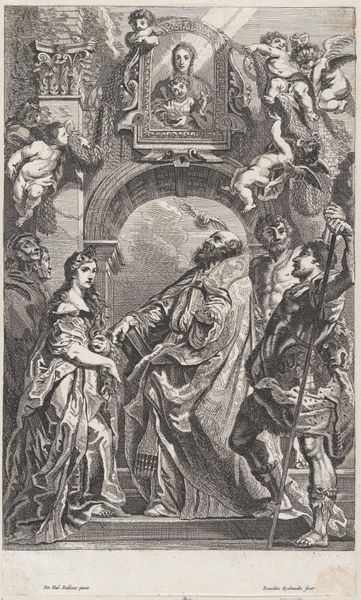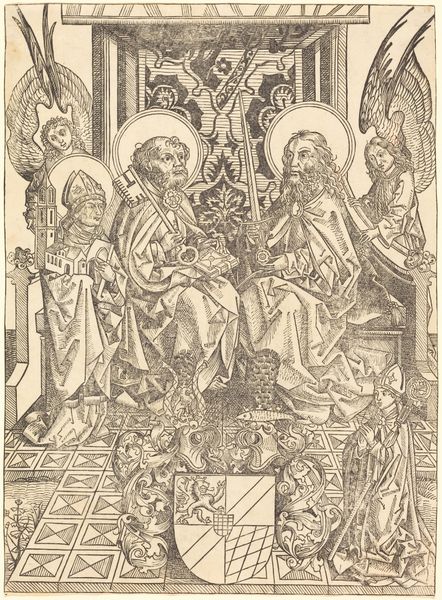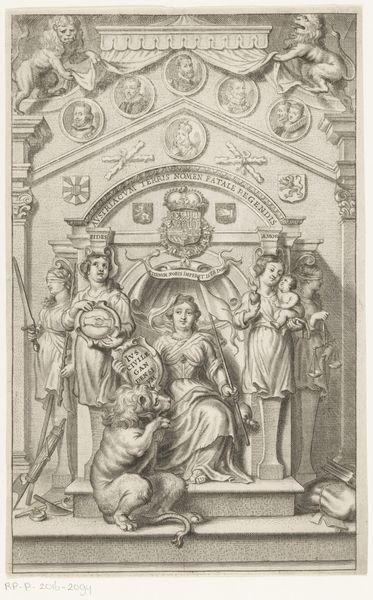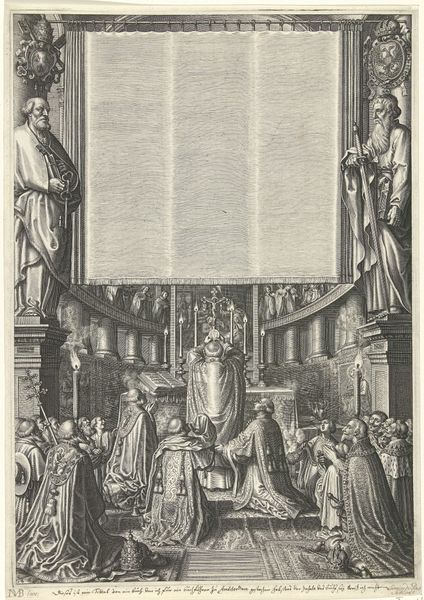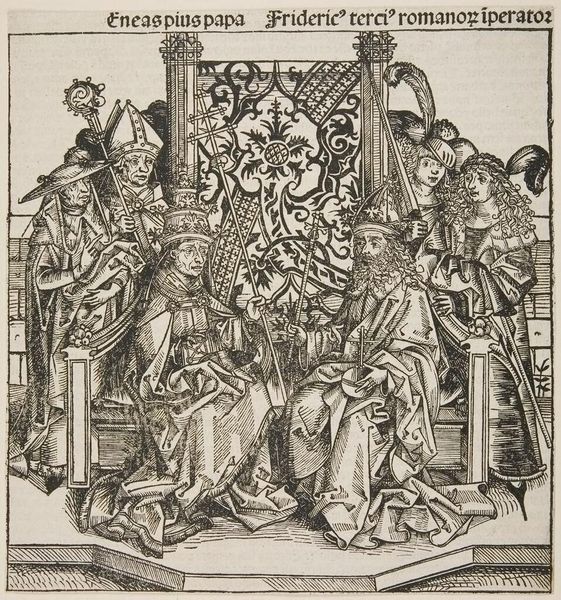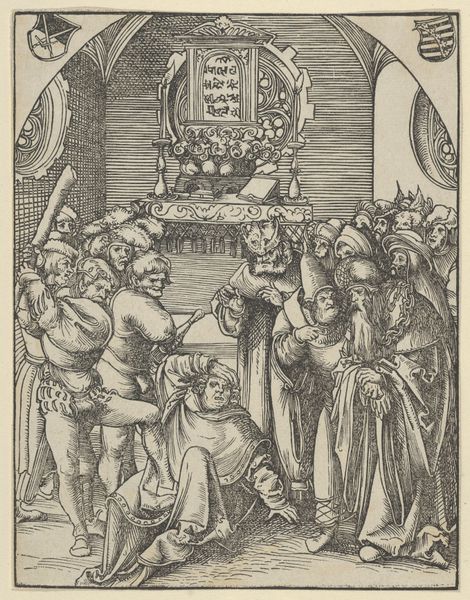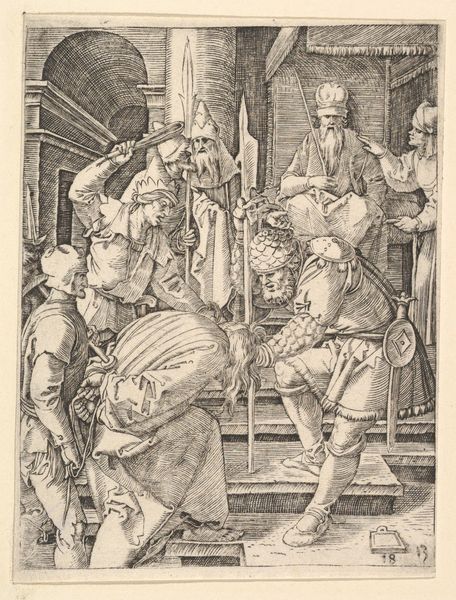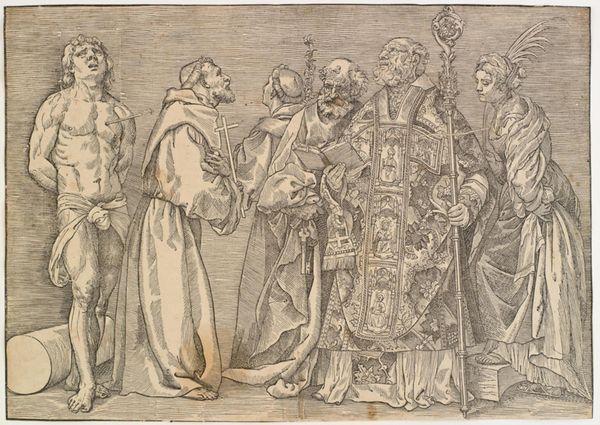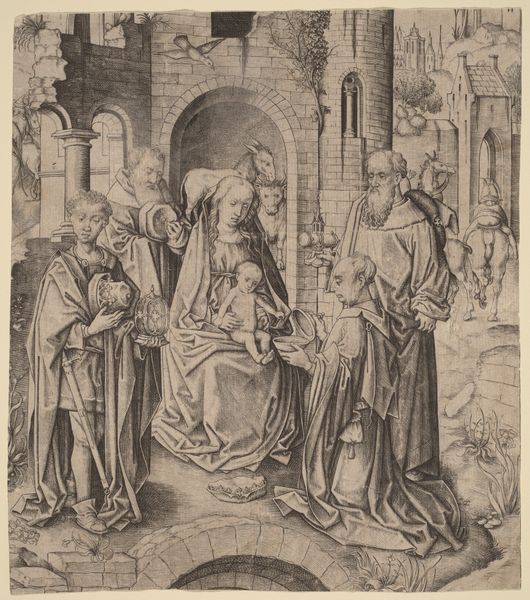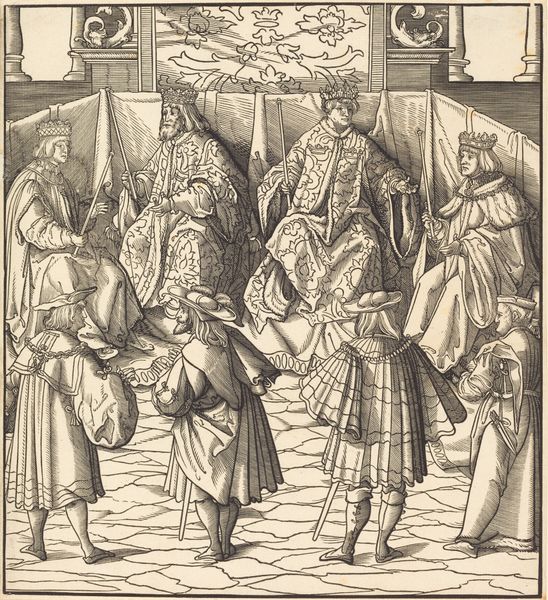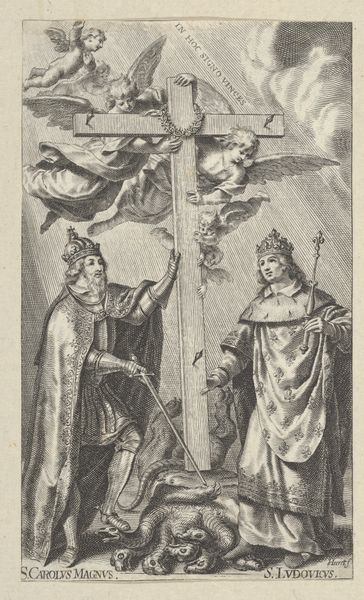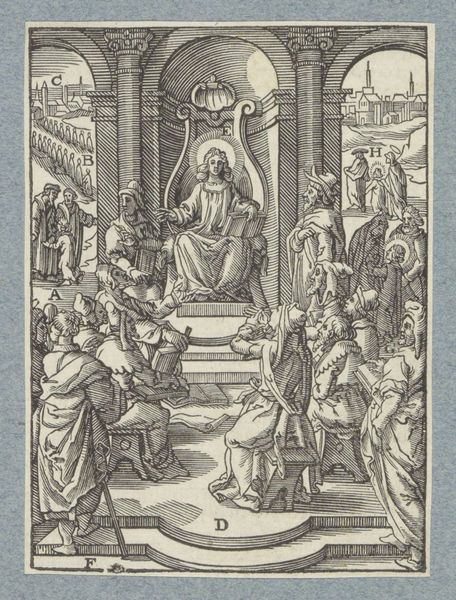
print, engraving
# print
#
figuration
#
history-painting
#
northern-renaissance
#
engraving
Dimensions: sheet (cut to block): 24.3 × 17.9 cm (9 9/16 × 7 1/16 in.)
Copyright: National Gallery of Art: CC0 1.0
Editor: This is "Saints Maximilian, Stephen, and Valentine" by Wolf Traut, an engraving from 1514. I'm struck by how meticulously detailed the figures and ornamentation are, given that it's a print. How would you interpret the iconography and the piece's broader historical significance? Curator: Well, beyond its immediate religious context, what I find crucial is the piece’s implicit commentary on power dynamics. These saints, rendered with such elaborate detail, weren't just holy figures; they were symbols wielded within the Church's political machinery. The composition itself stages a hierarchy: notice who’s positioned centrally and who's flanking them. Who do you think was the main subject of this engraving? Why these three saints, and what might they have represented to the patrons commissioning this work in 16th century Germany? Editor: I guess I hadn’t considered that...maybe the artist was trying to show the different facets of religious authority at the time, the ones represented by each saint? Curator: Precisely! And beyond just facets, what specific roles or arguments might each saint have been invoked to support? Look at the attire, the objects they hold, even their placement – everything serves to communicate a certain message, a particular perspective on power and devotion. This wasn't simply about faith; it was about staking claims in a complex sociopolitical landscape. Editor: So, you're saying that religious art from this era, isn't always purely devotional, but also a complex kind of social messaging? Curator: Exactly. We have to consider the historical context in which such religious iconographies were reproduced, not just their sacred associations. Reflecting on how the visual language constructs these figures also opens conversations about cultural dominance. The Northern Renaissance was a melting pot of ideas. How does an artwork like this one both reflect and possibly challenge them? Editor: I see. It's given me a totally new view on how I see religious art from that era. It’s much more than just saints. Curator: Absolutely. By asking critical questions about historical context and social relevance, we transform a seemingly straightforward religious image into a compelling mirror reflecting the turbulent past.
Comments
No comments
Be the first to comment and join the conversation on the ultimate creative platform.
